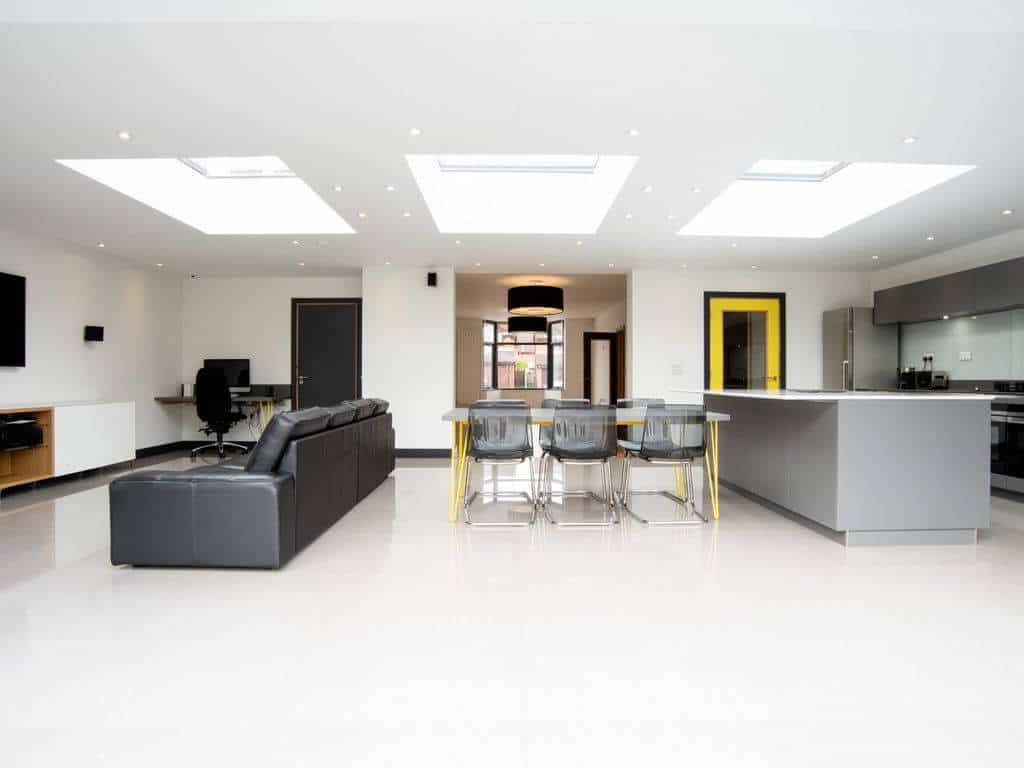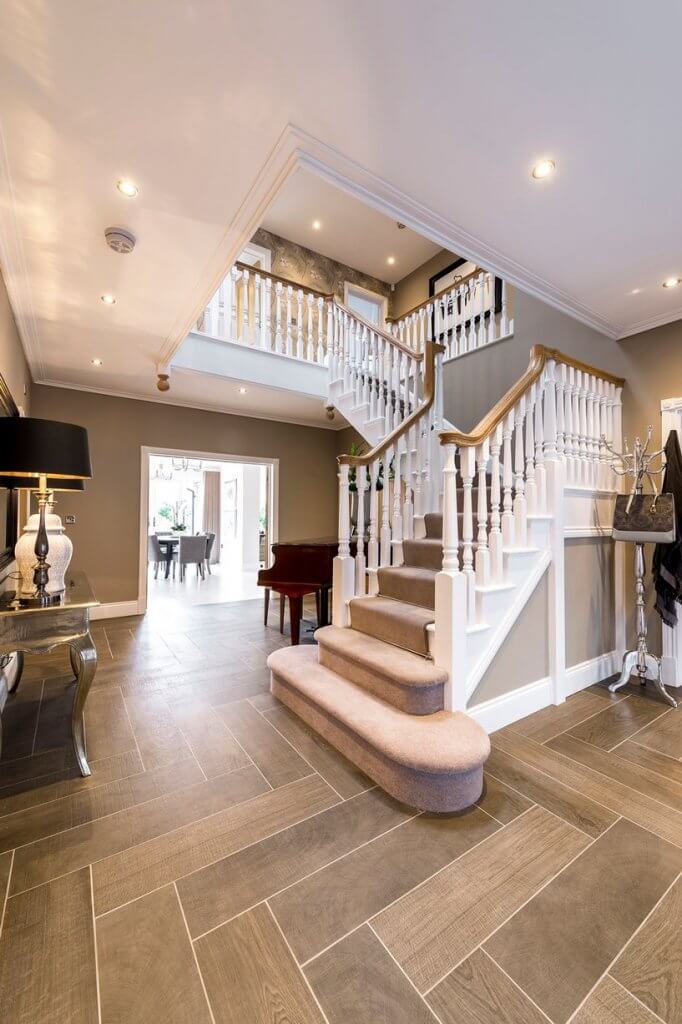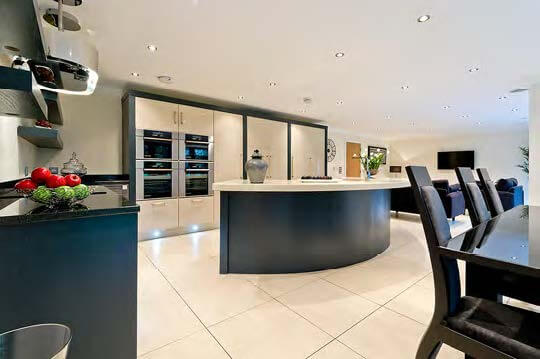Building Regulations: Everything you need to know for a successful build
Got your planning permission? Now you’ll need Building Regulations drawings to make sure your build meets national standards for building quality.
What are Building Regulations?
Building Regulations are minimum standards for design, construction and alterations to buildings in the UK. Any project you undertake must adhere to them Building Regulations are designed to ensure buildings are safe, structurally sound, water and energy efficient for their users, and also ensure that they are built in a way that allows access for people with disabilities.
Building Regulations drawings are much more detailed than planning drawings, showing construction methods and details in the drawing package and contain drawings, calculations and specification from your structural engineer showing proof that your proposed works are in full compliance with all the relevant Building Regulations.

They are grouped into 15 technical categories, from A to Q, known as ‘approved documents’. These are:
- Part A: Structural safety
- Part B: Fire safety
- Part C: Site preparation and resistance to contaminants and moisture
- Part D: Toxic substances
- Part E: Resistance to sound
- Part F: Ventilation
- Part G: Sanitation, hot water and water efficiency
- Part H: Drainage and waste disposal
- Part J: Heating and appliances
- Part K: Protection from falling, collision and impact
- Part L: Conservation of fuel and power
- Part M: Access to and use of buildings
- Part N: Glazing safety
- Part P: Electrical safety
- Part Q: Security
What’s the difference between Building Regulations and planning permission?
Planning Permission:
Planning permission is formally-granted permission from your local council that allows for the erection or alteration of buildings or other structural development, but has little to do with their actual construction process
Planning permission decisions are focused on whether development should go ahead or not – taking into account the appearance of buildings, the immediate neighbours and the potential impact the development will have on the wider environment.
Building Regulations:
Building Regulations, on the other hand, relate to how a building should be constructed. UK Building Control services work to make sure all buildings are designed and constructed in line with Building Regulations.
Your local council should have a Building Control department, where Building Control officers (also known as building inspectors) are usually based. Some Building Control officers are Approved Inspectors working in the private sector instead.
How do I get Building Regulations approval for my project?
If you’re undertaking any building or alteration work within your home, you should check whether it needs to be signed off as being compliant with Building Regulations.
On this page of the Planning Portal website you’ll find Building Regulations guidance for many common building projects. Some projects that need to comply with Building Regulations must be signed off by Building Control officers. These include:
- Extensions
- Loft conversions
- Garage conversions
- Underpinning work
- Cavity wall insulation
Local Authority Building Control
If you decide to use a local authority Building Control office for your Building Regulations (which tends to be the slower option), there are three types of application depending on the build stage:
- Full plans – drawings and other related information are submitted and a formal decision is given.
- Building notice – minimal information is submitted and no formal decision is given. Work is inspected while in progress and approved on completion.
- Regularisation – where retrospective approval is sought for work carried out without Building Regulations approval.

Once work is underway, the Building Control Service will need to make routine site inspections at various stages. Notice should be given to allow Building Control adequate time to inspect the work. If suitable notice isn’t given, Building Control may ask for work to be opened up for inspection. Talk to your local Building Control Service for more information about the inspection process.
If you use an Approved Inspector from the private sector, you should jointly notify your local authority that an Approved Inspector is carrying out the building control function. This video from Jewson offers a good overview of what exactly Building Control inspectors do, and why Building Regulations are so important.
Sign-off by a Competent Person
There is also a group of projects that need to comply with Building Regulations, but can be self-certified and signed off by the installer themself – if that tradesman is registered with a relevant Competent Person Scheme.
The Competent Person Scheme was introduced by the government to allow individuals and businesses with appropriate qualifications, skills and experience to self-certify that their work complies with the Building Regulations without needing to involve the council’s own departments.
Tradesmen who are registered with a Competent Person Scheme are vetted to ensure they are qualified to carry out specific types of work in accordance with the Building Regulations. Examples of projects that fall into this category include:
- Installation of a new or replacement heating system or boiler
- Installation of a new or replacement oil tank
- Installation of a bathroom if new plumbing is installed or existing plumbing is altered
- Installation of a fixed air conditioning system
- Installation of a new or replacement fuse box (or consumer unit) or any new electrical circuit connected to the fuse box
- Alterations to electrical installations around a bath or shower
- Replacement of window and door units
- Replacement of roof coverings on pitched and flat roofs

When they’ve finished, registered tradesmen will notify Building Control on your behalf and issue you with a certificate of completion. However, if you don’t use a registered tradesman, then you will have to notify your local Building Control and pay a fee to have the work inspected.
How much do Building Regulations Drawings Cost?
Our Building Regulations Packages start from £700+VAT, and are reasonably scaled for larger projects. Obviously, a new build house will require more work than an extension, and we factor that in our quotes for you. We offer a fast turnaround time and affordable cost for your drawings so you can get started on your build.
Are there projects that don't need Building Regulations approval?
You don’t need Building Regulations approval for certain exempt, generally smaller-scale projects. These include:
- Most repairs, replacements and maintenance work
- Additional power or lighting points or other alterations to existing electrical circuits (except around baths and showers)
- Like-for-like replacements of baths, toilets, basins or sinks
What happens if I don’t comply with Building Regulations?
If your local authority considers that the building work doesn’t comply with Building Regulations, they won’t issue you with a completion certificate, and unless work is rectified, any contraventions will appear in local land searches if you sell your property. In addition, you may also be subject to enforcement notices and fines – so it’s not worth the risk!
Getting good-quality building regulations drawings is key to the success of your build, so don’t skimp on them. If you’ve already got your planning permission, then we can help you with the next steps to push your project forwards. Drop us an email, call us on 0121 455 0032 or write to us on our live chat to find out how we can help you.